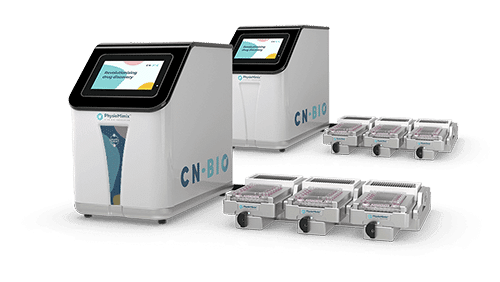What is the FDA Modernization Act 2.0, and what does it mean?
The U.S. Food and Drug Administration (FDA) are the federal agency tasked with approving new drugs for use within the United States (U.S.). On the 29th of September 2022 the U.S. Senate unanimously passed Bill S. 5002, the “FDA Modernization Act 2.0.” On Dec 23rd 2022, the U.S. House gave its final approval. This has subsequently been signed into law by President Biden. In this landmark measure, the Federal Food, Drug, and Cosmetic Act dating back to 1938 will now be updated to reflect the advances of modern science. But why is this such a big deal?
The original act mandated that all drugs must be tested on animals before human clinical trials. This law was passed in response to the marketing of Elixir Sulfanomide, a poisonous drug that caused over 100 deaths! It made perfect sense in the 1930s when animal testing was the only non-human method of testing drug safety before clinical trials, however, science and technology have come a long way since. So far, indeed, that the federal mandate stipulating that drug testing in animals MUST be performed, has now been eliminated. The use of New Approach Methodologies, also known as New Alternative Methods, or NAMs, to establish drug safety and effectiveness may be adopted in place of animal testing where appropriate.
In Section 3209 of the FDA Modernization Act 2.0 entitled “Animal Testing Alternatives,” the bill amends the regulatory guidance at the FDA that requires animal testing for drugs and biosimilars. The bill amends the Federal Food, Drug, and Cosmetics Act (FFDCA) to:
- Substitute the term “nonclinical tests” for the current “preclinical tests” (including tests on animals),
- Substitute the term “animal” for “nonclinical tests” and,
- Add a new section defining “nonclinical tests” to include human-relevant testing methods such as cell-based assays, microphysiological systems (such as Organ-Chips), or bioprinted or computer models.
What’s driven the policy change?
Ethical considerations are obviously an important driver as no one wants animals to be used needlessly.
The desire to bring new drugs to market more efficiently represents another driver. 90% of drugs still fail during clinical trials because they lack efficacy or present safety concerns. At the root cause is the failure of preclinical models to predict these responses in humans.
Additionally, discovery pipelines are no longer filled solely with small molecule drugs. New drug modalities make up roughly 20% of pipelines and their human-specific modes of action mean that animal models are less suited to their testing.
In recognition of this need, and to support the passing of the FDA Modernization Act 2.0, drug discovery companies and the FDA have been working with companies like ours to drive science and innovation in the NAMs space. Microphysiological systems (MPS), also known as organ-on-a-chip (OOC) are of particular interest because they allow researchers to recreate a test environment that accurately represents the human body and generate clinically translatable data.
MPS technology enables the user to recreate three-dimensional (3D) organs and tissues in the laboratory using relevant combinations of primary human cells. Fluid circulates through the tissue to provide nutrients and mimic blood flow. The result is lab-grown mimics that function and respond to drugs in the same way as humans. Plus, they can be linked together to simulate processes such as drug absorption and metabolism, or to understand interactions between organs, such as inflammation, which drive disease and cause unexpected toxicities. By doing so they provide an alternative to animals for the testing of drugs with human-specific modes of action.
| In vitro 2D cell culture | In vitro 3D spheroid | In vivo animal models | Organ-on-a-chip | |
| Human relevance | ||||
| Complex 3D organs and tissues | ||||
| (Blood)/Flow perfusion | ||||
| Innate & adaptive immune system | ||||
| Longevity | < 7 days | < 7 days | > 4 weeks | ~ 4 weeks |
| Acute & chronic dosing | ||||
| New modalities assessment | LOW | MEDIUM | LOW | MEDIUM-HIGH |
| Throughput | ||||
| Time to result | FAST | FAST | SLOW | FAST |
| High content data |
Because of their potential, MPS are specifically cited in section 3209 of the amended FDA Modernization Act, plus this human-relevant testing method has already been recognized by the FDA itself. In a recent first-of-its-kind publication1, the FDA demonstrated the improved performance of our PhysioMimix® Liver-on-a-chip, or liver microphysiological system, over traditional approaches for drug metabolism and toxicity applications. Our strong collaboration has continued over the last 5 years, branching out to evaluate the performance of additional organ models for multiple preclinical applications.
What does this mean for drug developers?
There is clearly a pressing need for more human-translatable in vitro models to be incorporated into preclinical workflows. With the passing of the FDA Modernization Act 2.0., drug developers in the U.S. now have much more choice and less reliance on animal models! They have the freedom to choose the most appropriate method for their application earlier in drug discovery, rather than being forced down an animal route. Change isn’t going to happen overnight. Technologies need to be proven, trust needs to be gained, old habits die hard, and SOPs take a long time to change…but right now:
- MPS can be used right at the beginning of drug discovery to validate targets in models that more accurately represent human disease
- MPS can be used ahead of animal studies to test larger numbers of conditions/refine conditions/minimize the number of animals required
- MPS can be used alongside animals to confirm or query results, reducing the risk of unforeseen issues due to interspecies differences
- Through the generation of human translatable data, MPS present an opportunity to re-engineer potentially flawed drugs early to maximize their chance of success once they hit the clinic
- In certain scenarios, NAMs provide an animal alternative, minimizing the unnecessary use of animals where translatability to humans is poor.
By enabling researchers to incorporate the most technologically advanced tools into their toolbox, the cost/time to deliver much-needed therapeutics to market will be improved. Time will reveal the true outcome, however, independent research estimates that fully integrating OOC into pharma workflows could save up to 26% of all R&D costs2.
What does this mean for NAM providers (including us at CN Bio)
It means that the spotlight is on. Years of hard work have ensured that we are ready for the challenge, and it’s an exciting place to be! Behind the scenes, companies like ours have been developing the technology, the advanced single- and multi-organ MPS and their applicability (within the disease modeling, toxicity testing and ADME space) for over a decade. Through collaboration with academia, drug discovery companies, consortia (such as the IQ Consortium) and various regulators we have collectively been growing a body of evidence to demonstrate the ability of these human-relevant models to deliver data that better predict human outcomes. Our technology is ready to deliver on the pathway forward presented in the amended FDA Modernization Act.
We also work collaboratively with organizations’ such as The North American 3Rs Collaborative (NA3RsC) and Animal Free Research UK (AFRUK) to drive awareness for MPS technology as an animal alternative.
Whilst mentioning the U.K., this brings me to another important point. It’s important to note here that, although the U.S. has been the first regulator to take the leap, important work is going on in other regions to drive change too. Back in 2014, here in the U.K., plans were announced to reduce the use of animal tests in scientific research, aiming to replace those tests with ‘scientifically valid alternatives’ where possible. More recently in 2021, the European Parliament voted in favor of plans to phase out animal testing in research. Last year CEN, the European Committee for Standardization who are focused on helping to drive the adoption of new technologies set up a focus group on OOC and not-for-profit groups such as The European Organ-on-a-Chip Society (EUROoCS) have been growing their network since 2018 in a bid to share and advance knowledge in the field towards better health for all.
For us personally, our development teams are busy as we continue to polish, refine, validate and innovate in this space to support the appetite for MPS use. Our focus is to address areas of preclinical drug discovery that are currently poorly met. This includes facilitating the discovery of therapeutics to tackle unmet diseases (e.g. Non-alcoholic steatohepatitis), modeling human lungs, our immune systems, our gut microbiome, overcoming the challenges of developing drugs with human-specific modes of action and the ultimate goal…developing a human body-on-a-chip for systemic testing too. However, a significant proportion of our R&D time is focused on facilitating the adoption of OOC into preclinical workflows. At the end of the day, there is no point in having the most human-relevant models if the costs are prohibitively expensive, they can’t be recreated by labs all over the world and they don’t deliver meaningful, robust, and reliable data!
So, to close, although the passing of the FDA Modernization Act represents an important milestone, realistically, this represents the first chapter in a very exciting book that is yet to be written. However, now that the largest regulator on the planet has taken the first step, we keep our fingers crossed that others will follow suit. Should this be the case, and NAMS deliver on their promise, we all win – humankind, the industry and our furry friends. But for now, we look forward to welcoming new customers – for whom the door is now open – and sharing their stories of success as they evolve.
For more information about CN Bio’s PhysioMimix OOC range of MPS click here
To learn more about key MPS applications click here
Want to gain instant access? Find out more about our Contract Research Services here


